-
1 of 253523 objects
Icon of the Mandylion of Edessa 18th century
Tempera on panel | 40.3 x 32.0 cm (support, canvas/panel/stretcher external) | RCIN 403934
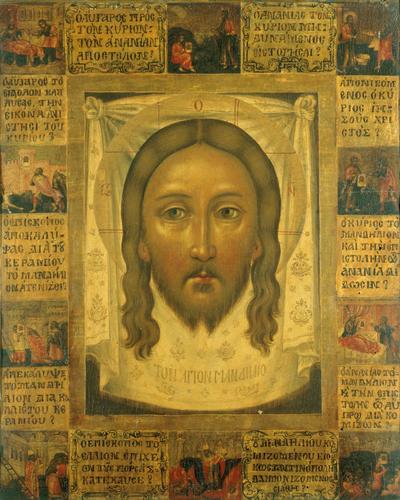
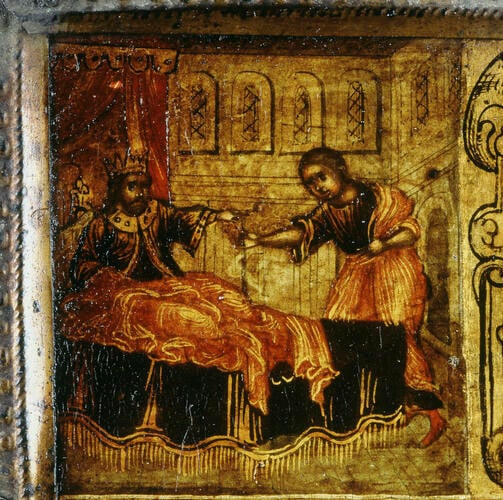
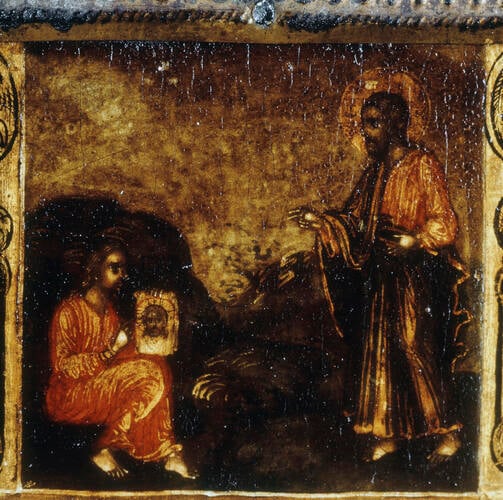

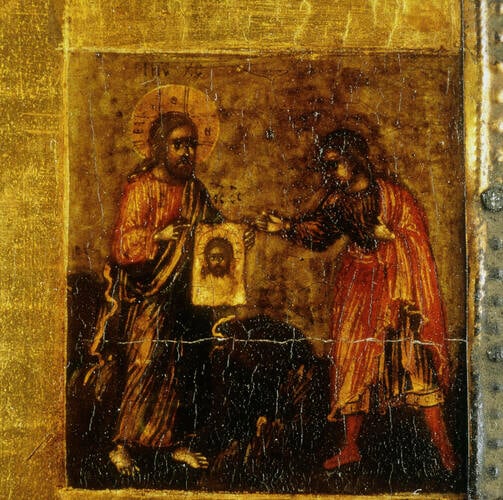
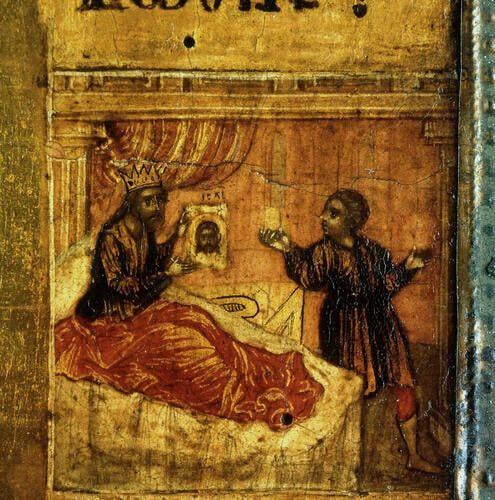

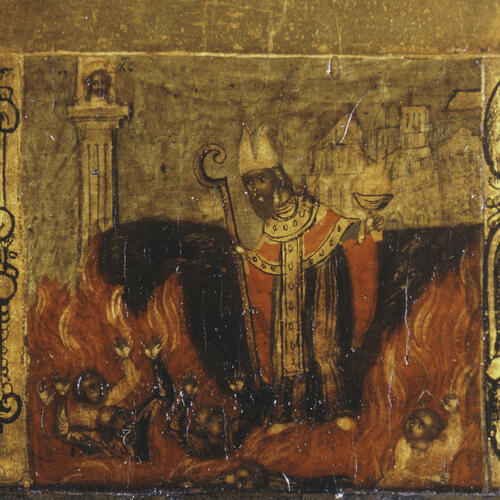
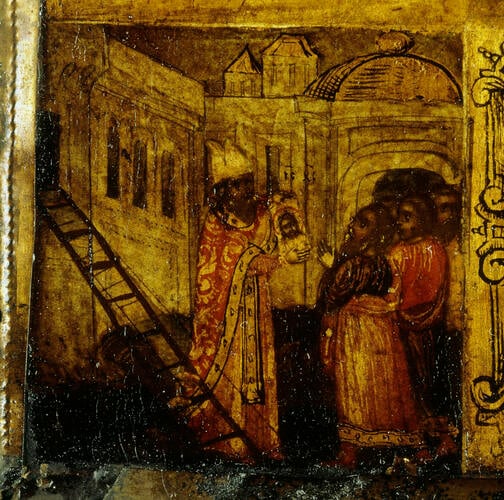
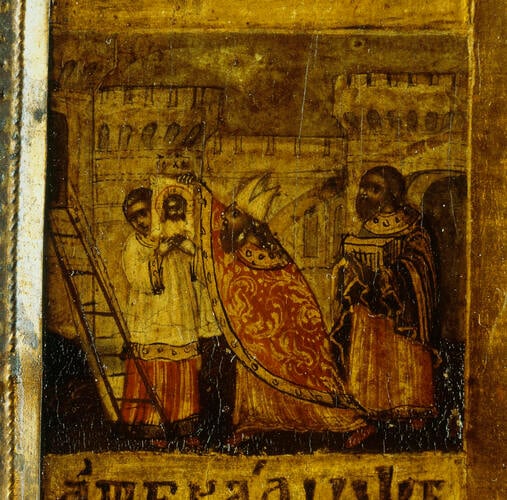
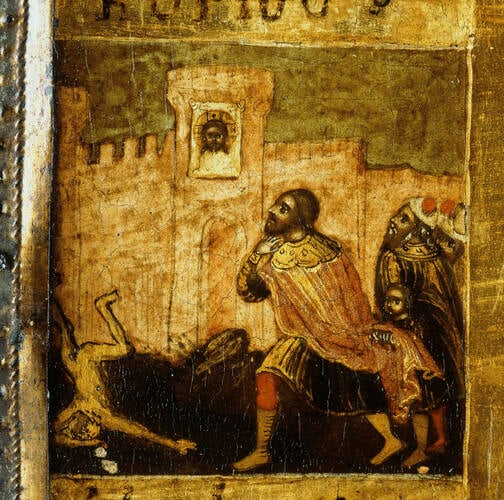
-
The 'Story of the Image of Edessa', as recounted in the tenth century, tells of the moment in which Christ's likeness becomes imprinted upon a towel, which he had used to wash and dry his face. This miraculous image became known as the Mandylion (which translates in Byzantine Greek as 'small cloth' or 'towel') and was the most famous image of Christ 'not made by human hands' from the sixth to the early thirteenth century. A depiction of the Mandylion is found in the centre of this painting.
This painting is an 'icon', which comes from the Greek word eikon, meaning likeness or image. Although it can mean many different things, broadly speaking, in the eastern Byzantine and Orthodox Christian traditions, icons such as this were used in devotion and rituals, believed to afford the viewer direct communication with the sacred figures represented.
Around the edge of the panel is the legend of the Mandylion, as recounted in tenth century, illustrated in ten rectangular scenes and accompanied by Greek inscriptions. They draw from the 'Story of the Image of Edessa', written after the Mandylion was transferred to Constantinople (now Istanbul) from the city of Edessa (now Urfa, in Turkey) in 944 AD. The first five scenes, which run clock-wise from the top left-hand corner, tell of the King of Edessa – Abgar – who was afflicted with leprosy and arthritis. In the first scene, he asks his servant Ananias to take a letter to Christ, asking Jesus to come to Edessa in order to heal him. If the letter is not successful then Ananias is to instead make a drawing of Christ. Next, Ananias tries but is unable to draw Christ. Christ then declines Abgar's invitation but sends a letter promising that the king will be healed. In the third and fourth episodes, Christ washes and dries his face, whereby his likeness is miraculously imprinted upon the cloth. In the fifth scene, Ananius presents the letter and the cloth bearing the image of Christ to the king, who is healed and converts. The remaining scenes, which work downwards in the left border, show King Abgar destroying an idol at Edessa's city gate, and replacing it with the Mandylion.
The final episodes show the Mandylion being rediscovered in the sixth century. The story recounts how it had been hidden by a tile, and remained hidden until the Persians invaded the city. Instructed by a vision, the Bishop of Edessa found the Mandylion hidden with a lamp still burning. The icon was so powerful that it had even engraved another likeness of the image onto the tile that had been covering it. The Bishop can be seen pouring burning oil from the lamp onto the Persians to stop their invasion. The last scene shows the journey of the Mandylion from Edessa to Constantinople in 944 AD.
An icon often copies an original, miraculous prototype and, in doing so, is thought to contain the supernatural powers of that original. In the style and composition of its central Mandylion image, the Royal Collection picture seems to be a copy of an icon by the leading seventeenth-century Russian icon painter, Simon Ushakov (1626-86); the faulty spelling in the inscription beneath Christ's face (which translates as 'The Holy Mandylion') attesting to its status as a copy. As its ultimate source however, the Royal Collection picture relates to the Mandylion image housed in the Barnabite Monastery attached to the Church of S. Bartolomeo degli Armeni in Genoa, Italy. The Genoese example has ten small scenes running around the panel's frame, of the same subject matter, and with near identical inscriptions. The Genoese picture is one of three pictures which were once thought to be the original Mandylion in the Middle Ages; one in the Vatican, Rome, and the other in Sainte-Chappelle, Paris (now lost).
Provenance
One of the group of Byzantine works from the 77 paintings belonging to Prince Ludwig von Oettingen-Wallerstein (1791-1870), which were first offered to Prince Albert in 1847 as security for a loan and came into his possession by default (no 4 in Waagen’s catalogue of 1854); 25 of them were accepted by the National Gallery in 1863.
-
Creator(s)
(artist)(artist)Acquirer(s)
-
Medium and techniques
Tempera on panel
Measurements
40.3 x 32.0 cm (support, canvas/panel/stretcher external)
62.2 x 53.5 x 6.9 cm (frame, external)
Category
Object type(s)
Subject(s)
Alternative title(s)
The likeness of Christ / Holy Sudarium